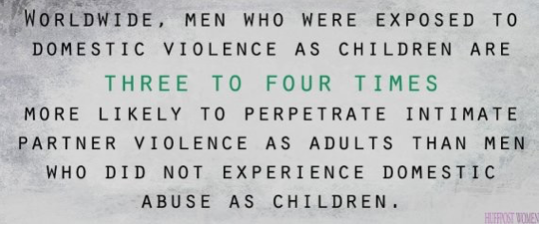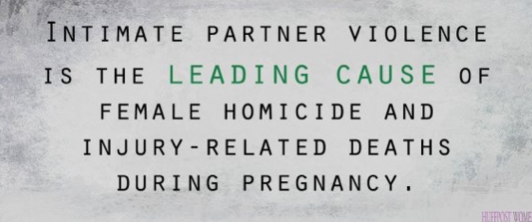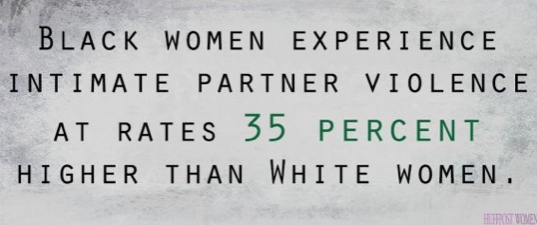Statistics
Domestic Violence Statistics
Only 4% of abused victims had used a domestic violence hotline or shelter within the year prior to being killed by an intimate partner. – Sharps, P. W., et al. (2001). Health care providers’ missed opportunities for preventing femicide. Preventive Medicine 33, 373-80.
In the year prior to the homicide, more than 44% of abusers were arrested, and almost one-third of victims contacted the police.
Sharps, P. W., et al. (2001). Health care providers’ missed opportunities for preventing femicide. Preventive Medicine 33, 373-80.
Danger Factors for Intimate Partner Homicide:
- Jealousy
- Substance Abuse (drugs and/or alcohol)
- Possession of a Firearm
- Depression/Suicidal Ideation of Abuser
- Materially Motivated (Wealth/Lifestyle Retention – Fear of Loss of Image/Assets/Status due to Divorce)
- Prior History of Violence
- Less Fear of Legal Consequences
- Desperation
- Family History of Domestic Violence Exposure in Childhood
Dr. David Adams
Dr. David Adams is the author of the book Why Do They Kill?: Men Who Murder Their Intimate Partners. He is the co-founder as well as Co-Director of Emerge, the first counseling program in the nation for men who abuse women; it was established in 1977.
Risk Assessment
- Identification of High Risk of Lethality Cases
- Prevention
- Safety Planning
- Fatality Review – data not present in criminal justice records, medical records, typically only able to gain insight from family members. Researcher should be on team to analyze data, publish findings for other teams and communities.
- Most (70%) IPV violence is never reported or documented, which is why collecting information from family members is critical. Very important to family members. Most want to participate so that their loved one’s death is not in vain. Prevention.
Dr. Jacquelyn Campbell
Dr. Jacquelyn Campbell is a national leader in research and advocacy in the field of domestic and intimate partner violence. She holds a joint appointment in the John Hopkins University Bloomberg School of Public Health.
- Of all homicides with female victims, 45% are committed by an intimate partner (Catalano et al., 2009; VPC, 2011)
- Of women killed by men that they know, 63% were killed by a spouse, ex-spouse or current intimate partner (Catalano et al., 2009; VPC, 2011)
- Between 65-80% of female intimate partner homicide victims were previously abused by the partner who killed them, making domestic violence the single largest risk factor for intimate partner femicide (Sharps et al., 2001; Campbell et al., 2003b; Campbell et al., 2007; Moracco, Runyon & Butts,1998; Pataki, 1997)
- Over the past 25 years in the U.S., more intimate partner homicides have been committed with guns than with all other weapons combined (Zeoli, 2013)
- Guns are the most frequent means of killing an intimate partner:
- 57.4% of intimate partner femicides are committed with a gun
- Ex-wives are killed with a firearm in 77% of cases
- (Fox & Zawitz, 2004)
- Firearms are more likely to be used in intimate partner homicides than in non-intimate partner homicides (71.5% versus 60.5%) (Mercy & Saltzman, 1989)
- Availability of guns makes it easier to commit homicide, and particularly multiple homicides / mass violence (Adams, 2007)
- When previous domestic violence exists, gun ownership increases risk up to 20 times (Kellerman et al., 1993)
- Taking other variables into consideration, the use of a gun increases the risk of fatality more than 40 times (Campbell, 1995)
- When laws are in place to restrict firearm purchases for batterers subject to protection orders, there is a 13% reduction in rates of intimate partner homicide of women with guns (Vigdor & Mercy, 2006)
Women who have been strangled by their intimate partner are 7.48 times more likely to be the victim of intimate partner homicide (Glass et al., 2008)
Approximately 3,300 children are affected by intimate partner femicide each year (Lewandowski, 2003) - A study of intimate partner homicides found that 20% of victims were not the intimate partners themselves, but family members, friends, neighbors, persons who intervened, law enforcement responders, or bystanders.3
- Sharon G. Smith, Katherine A. Fowler, and Phyllis H. Niolon. Intimate Partner Homicide and Corollary Victims in 16 States: National Violent Death Reporting System, 2003–2009. American Journal of Public Health: March 2014, Vol. 104, No. 3, pp. 461-466. doi: 10.2105/AJPH.2013.301582
- Between 2003 and 2008, 142 women were murdered in their workplace by their abuser, 78% of women killed in the workplace during this timeframe.
Workplace Homicides Among U.S. Women: The Role of Intimate Partner ViolenceHope M. Tiesman, PhDKelly K. Gurka, PhD Srinivas Konda, MPH Jeffrey H. Coben, MDHarlan E. Amandus, PhD
72% of all murder-suicides involve an intimate partner; 94% of the victims of these murder suicides are female. NCADV
- The number of American troops killed in Afghanistan and Iraq between 2001 and 2012 was 6,488.
- The number of American women who were murdered by current or ex male partners during that time was 11,766. That’s nearly double the amount of casualties lost during war.
- Women are much more likely to be victims of intimate partner violence with 85 percent of domestic abuse victims being women and 15 percent men. Too many women have been held captive by domestic violence — whether through physical abuse, financial abuse, emotional abuse or a combination of all three.
- We are inundated with news stories about domestic violence , from athletes beating their significant others in public elevators or in their own homes to celebrities publicly abusing their girlfriends. This problem is not one that will go away quickly or quietly.
- As Domestic Violence Awareness Month comes to an end, discussions about intimate partner abuse and its horrible repercussions should not. In an attempt to illustrate the gravity of abuse all genders (but largely women) face in the U.S., we rounded up 30 statistics on domestic violence.
- Domestic violence is not a singular incident, it’s an insidious problem deeply rooted in our culture — and these numbers prove that.
3 – The number of women murdered every day by a current or former male partner in the U.S.
38,028,000 – The number of women who have experienced physical intimate partner violence in their lifetimes.
American Psychological Association
4,774,000 – The number of women in the U.S. who experience physical violence by an intimate partner every year.
1,509 – The number of women murdered by men they knew in 2011. Of the 1,509 women, 926 were killed by an intimate parter and 264 of those were killed by an intimate partner during an argument.
Centers for Disease Control and Prevention
18,000 – The number of women who have been killed by men in domestic violence disputes since 2003.
1 in 4 – The number of women who will be victims of severe violence by an intimate partner in their lifetimes.
1 in 7 – The number of men who will be victims of severe violence by an intimate partner in their lifetimes.
8,000,000 – The number of days of paid work women lose every year because of the abuse perpetrated against them by current or former male partners. This loss is equivalent to over 32,000 full-time jobs.
40-45 – The percentage of women in physically abusive relationships who are raped and/or assaulted during the relationship.
18,500,000 – The number of mental health care visits due to intimate partner violence every year.
$948 – The average cost of emergency care for intimate partner violence related incidents for women. The average cost for men is $387.
American Psychological Association
2 in 5 – The number of gay or bisexual men who will experience intimate partner violence in their lifetimes.
50 – The percentage of lesbian women who will experience domestic violence (not necessarily intimate partner violence) in their lifetimes.
81 – The percentage of women who are stalked by a current or former male partner who are also physically abused by that partner.
Risk Factors for Femicide in Abusive Relationships: Results From A Multisite Case Control Study
70 – The percentage of women worldwide who will experience physical and/or sexual abuse by an intimate partner during their lifetimes.
98 % – The percentage of financial abuse that occurs in all domestic violence cases. The number one reason domestic violence survivors stay or return to the abusive relationship is because the abuser controls their money supply, leaving them with no financial resources to break free.
University of Minnesota’s Institute on Domestic Violence in the African American Community
$5,800,000,000 – The estimated cost of incidents of intimate partner violence perpetrated against women in the U.S. in 1995 alone.
21 – The number of LGBT people murdered by their intimate partners in 2013. Fifty percent of them were people of color. This is the highest documented level of domestic violence homicide in the LGBT community in history.
2.6x – The amount of times more likely a transgender person of color is to become a victim of intimate partner violence than a non-LGBT person.
National Coalition for the Homelessness
70x – The amount of times more likely a woman is to be murdered in the few weeks after leaving her abusive partner than at any other time in the relationship.
10,000,000 – The number of children exposed to domestic violence every year.
25 – The percentage of physical assaults perpetrated against women that are reported to the police annually.
Need help? In the U.S., call 1-800-799-SAFE (7233) for the National Domestic Violence Hotline or visit the National Sexual Assault Online Hotline operated by RAINN. For more resources, visit the National Sexual Violence Resource Center’s website.
http://www.huffingtonpost.com/2014/10/23/domestic-violence-statistics_n_5959776.html
Access to firearms yields a more than five-fold increase in risk of intimate partner homicide when considering other factors of abuse, according to a recent study, suggesting that abusers who possess guns tend to inflict the most severe abuse on their partners.
Jacquelyn C. Campbell et al., Risk Factors For Femicide in Abusive Relationships: Results From A Multi-Site Case Control Study, 93 Am. J. of Public Health 1089, 1092 (2003), abstract available at http://www.ajph.org/cgi/content/abstract/93/7/1089
Of females killed with a firearm, almost two-thirds were killed by their intimate partners. The number of females shot and killed by their husband or intimate partner was more than three times higher than the total number murdered by male strangers using all weapons combined in single victim/single offender incidents in 2002.
The Violence Pol’y Ctr., When Men Murder Women: An Analysis of 2002 Homicide Data: Females Murdered by Males in Single Victim/Single Offender Incidents, at 7 (2004), available at http://www.vpc.org/studies/wmmw2004.pdf
ALL SERVICES ARE FREE AND CONFIDENTIAL NEW TEXT LINE: (906) 290-9081
PO Box 1172, Marinette, WI 54143 ~ (800) 956-6656
1530 Main St., Marinette, WI 54143 ~ (715) 735-6656 Fax: (715) 735-7293
1201 Main St., Oconto, WI 54153 ~ (920) 834-5299 Fax: (715) 735-7293








